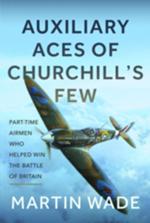Established in October 1924 as the Auxiliary Air Force (AAF), it consists of paid volunteers who train on evenings and weekends to support the RAF during national emergencies and conflicts. Their pre-war counterparts, alongside pilots of the RAF Volunteer Reserve (RAFVR), played a pivotal role in the Battle of Britain.Of the sixty-two squadrons involved in the Battle of Britain, fourteen were AAF units. These experienced Auxiliary squadrons claimed 30% of the enemy aircraft destroyed in the summer of 1940. Notably, No. 609 (West Riding) Squadron became the first Spitfire squadron to claim 100 enemy kills. The highest scoring Auxiliary unit was No. 603 (City of Edinburgh) Squadron, which achieved fifty-eight kills under Squadron Leader George Denholm’s leadership.Auxiliary Aces of Churchill’s Few highlights the stories of many of these heroic pilots. Squadron Leader Archie McKellar, a plasterer turned fighter pilot with No. 602 (City of Glasgow) Squadron, became an “Ace in a Day” by shooting down five Me109s in just 24 hours while flying with No. 605 (County of Warwick) Squadron. Sergeant James ‘Ginger’ Lacey of No. 501 (County of Gloucester) Squadron shot down a bomber attacking Buckingham Palace during his service. Flight Lieutenant Findlay Boyd of No. 602 (City of Glasgow) Squadron downed a Junkers Ju 87 Stuka less than a minute after take-off, recording the fastest victory of the battle.

Auxiliary aces of Churchill’s few
ISBN: 9781036121693
Format: Hardback
Publisher: Pen & Sword Books Limited
Origin: GB
Release Date: July, 2025


